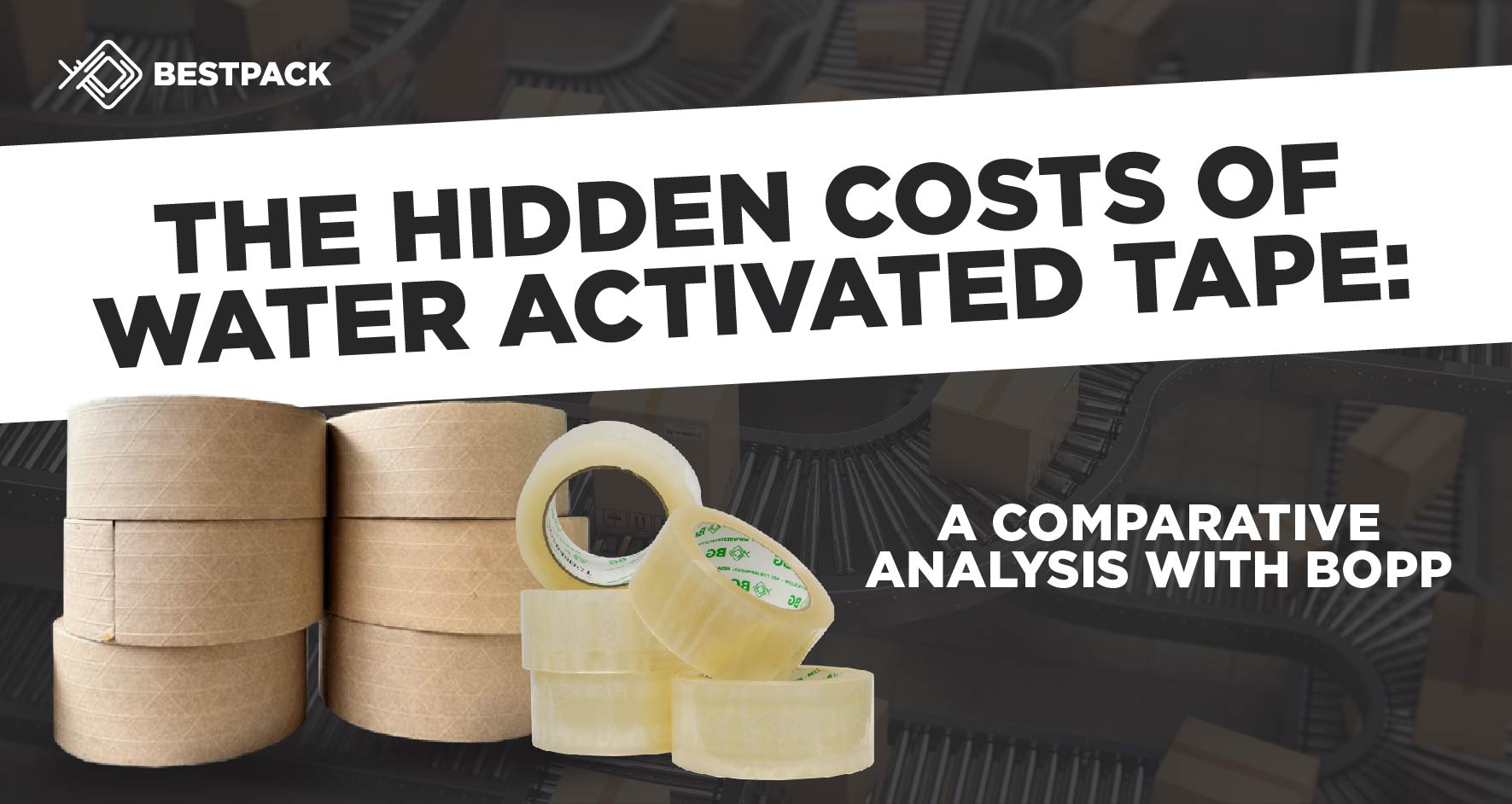
In the realm of packaging, the debate between BOPP (Biaxially-Oriented Polypropylene) tape and Water Activated Tape (WAT) is ongoing.
While WAT is often marketed as a sustainable and effective solution, a deeper analysis reveals significant drawbacks, especially when compared to the efficiency and environmental friendliness of BOPP tape.
In this comprehensive exploration, we unravel the truth behind these two contenders, focusing on their performance, sustainability, and overall impact on packaging operations.
Water Activated Tape has been championed for its perceived environmental benefits and supposed superior sealing capabilities.
However, the reality is more complex. WAT requires specific conditions to activate its adhesive properties, which can be a significant limitation in varied operational environments. This reliance on water activation poses challenges in consistency, especially in climates or settings where humidity and temperature fluctuate.
In climates with low humidity, for instance, there might be a need for more water to activate the adhesive effectively, while in very humid conditions, the tape might become prematurely sticky or not adhere properly.
Temperature fluctuations can affect the viscosity and stickiness of the adhesive. These factors can pose challenges in maintaining a consistent application of the tape, especially in automated packaging systems where speed and reliability are crucial.
An overlooked limitation of Water Activated Tape (WAT) is its incompatibility with automation. Most existing automated solutions struggle to effectively integrate WAT, leading to increased labor costs and lower throughput. This lack of automation not only diminishes operational efficiency but also contributes to material wastage, as manual taping is more prone to inconsistency and errors compared to automated systems.
Additionally, the environmental claims of WAT deserve scrutiny. While it is often touted as more sustainable due to its paper-based composition, the process of manufacturing and recycling WAT is not as straightforward as it appears. The recycling process of WAT can be cumbersome, often requiring additional steps to separate the tape from cardboard and even creating potential contamination which can diminish the efficiency of recycling systems.
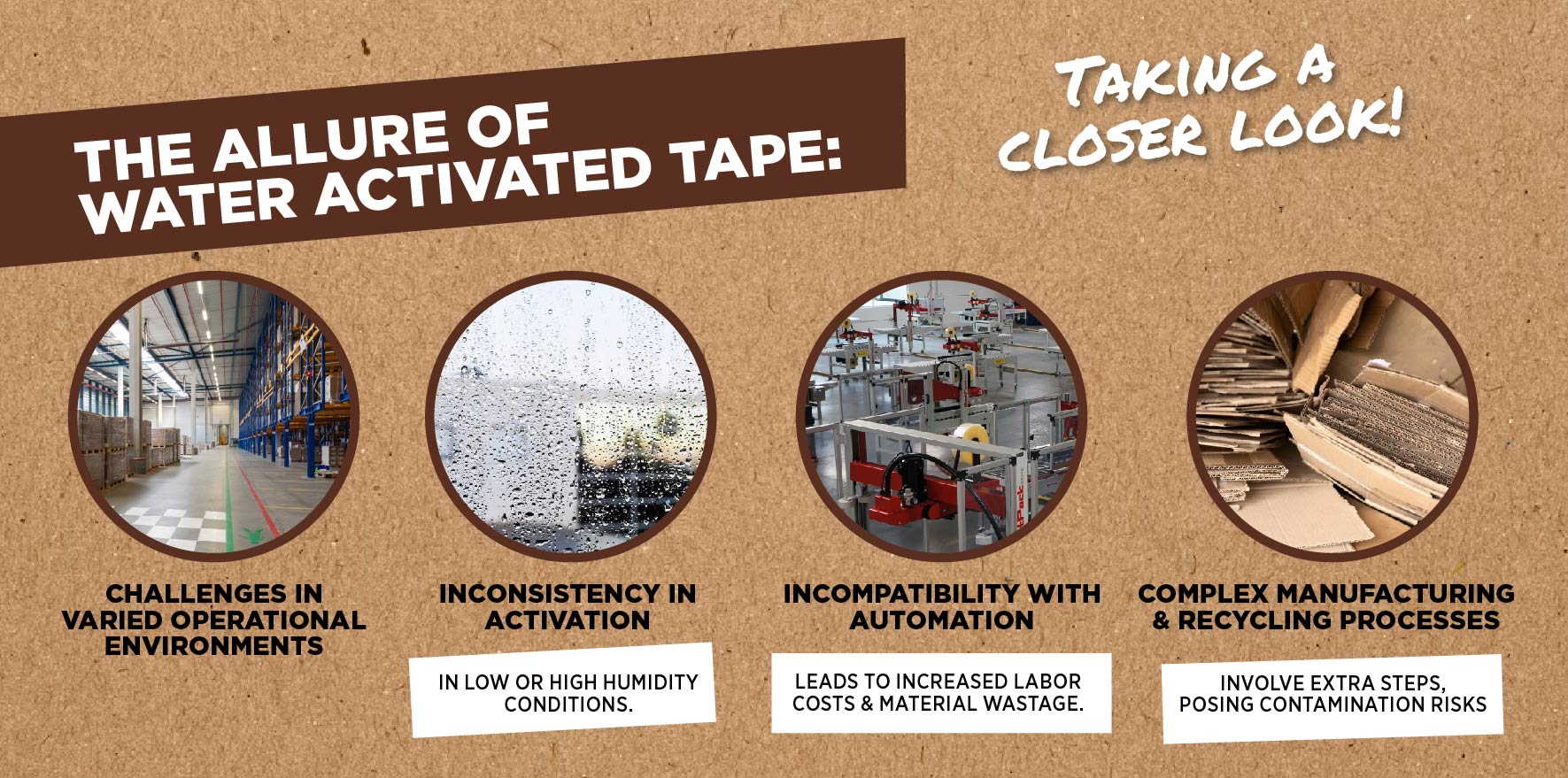
Turning our attention to BOPP tape, its advantages become increasingly evident. The robustness of BOPP, derived from its biaxial orientation, provides unparalleled strength and durability in packaging. This strength ensures that packages are securely sealed, reducing the risk of damage during transit and thereby minimizing waste.
A noteworthy aspect of BOPP tape is its adhesive quality. The acrylic adhesive used in BOPP tape is not only water-based but also formulated to withstand a wide range of temperature extremes. This resilience makes BOPP tape exceptionally reliable in environments where temperatures may fluctuate dramatically.
Whether exposed to the scorching heat of a desert warehouse or the frigid conditions of a cold storage facility, the adhesive maintains its integrity and effectiveness, ensuring a consistent and secure seal.
Environmental Footprint of BOPP Tape
Moreover, in terms of environmental considerations, BOPP tape stands out as a conscious choice. Its recyclability process is streamlined; during recycling, the tape easily separates from cardboard, allowing both materials to be recycled efficiently.
This characteristic, combined with the harmless dissipation of its water-based adhesive, significantly reduces the environmental impact, challenging common misconceptions about its ecological footprint.
Versatility and Efficiency in Automation
In automated packaging systems, BOPP tape excels due to its adaptability. Its compatibility with a wide range of temperatures and packaging types makes it a versatile option, ideal for integration with any of BestPack’s over 150+ automated packaging solutions.
Furthermore, the automation of BOPP tape application significantly reduces the need for manual, repetitive movements, thus improving workplace safety and reducing the risk of strain injuries. This aspect is particularly beneficial in high-volume packaging operations where employee well-being is a priority.
Additionally, the precision offered by automation leads to a notable reduction in packaging waste. The consistent and accurate application of BOPP tape ensures optimal usage of materials, contributing to both cost savings and environmental sustainability.
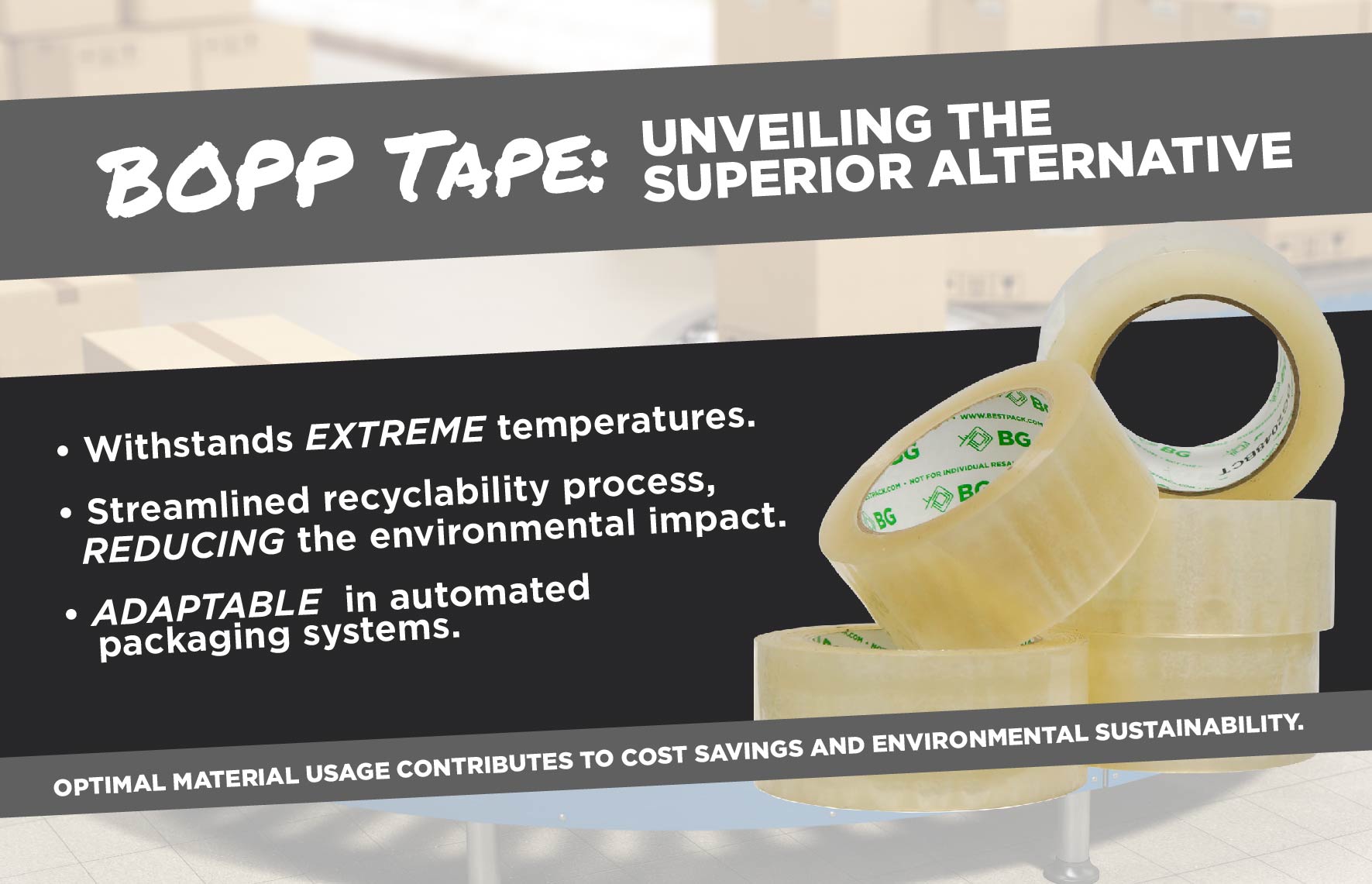
To understand the practical implications of choosing between WAT and BOPP, let’s consider their performance in real-world scenarios.
In real-world scenarios, the non-automatability of WAT becomes a glaring issue, especially in high-volume packaging operations. Unlike BOPP tape, which seamlessly integrates into automated systems, WAT’s reliance on manual application drastically reduces packaging line efficiency. As stated earlier, this leads to slower processing times and increased labor costs along with increased material waste.
WAT, with its dependency on water activation, presents unique challenges, particularly in high-speed packaging lines. In these environments, consistency and speed are not just desirable but essential.
The need for water to activate WAT’s adhesive can introduce a level of unpredictability and delay, which can be particularly problematic in settings where operational pace is critical. For instance, in high-volume dispatch environments, any lag in the packaging process can lead to bottlenecks, affecting overall productivity.
Moreover, environmental factors such as humidity and temperature variations can impact WAT’s effectiveness.
In low humidity conditions, there’s a risk of inadequate adhesive activation, while in highly humid settings, the tape might become prematurely sticky or fail to adhere properly. These inconsistencies can lead to compromised package security and potentially increased waste due to rework or damaged goods.
In contrast, BOPP tape stands as a more reliable and consistent option in diverse operational environments. Its inherent robustness, derived from its biaxial orientation, ensures strong and durable sealing.
This reliability is a significant advantage in high-speed packaging lines, where the tape needs to perform under pressure without fail. BOPP tape’s adhesive, being less sensitive to environmental variations, maintains its integrity and bonding strength across a broad range of temperatures and humidity levels.
BOPP’s reliability ensures that packaging lines remain efficient, effective, and uninterrupted, regardless of the external conditions.
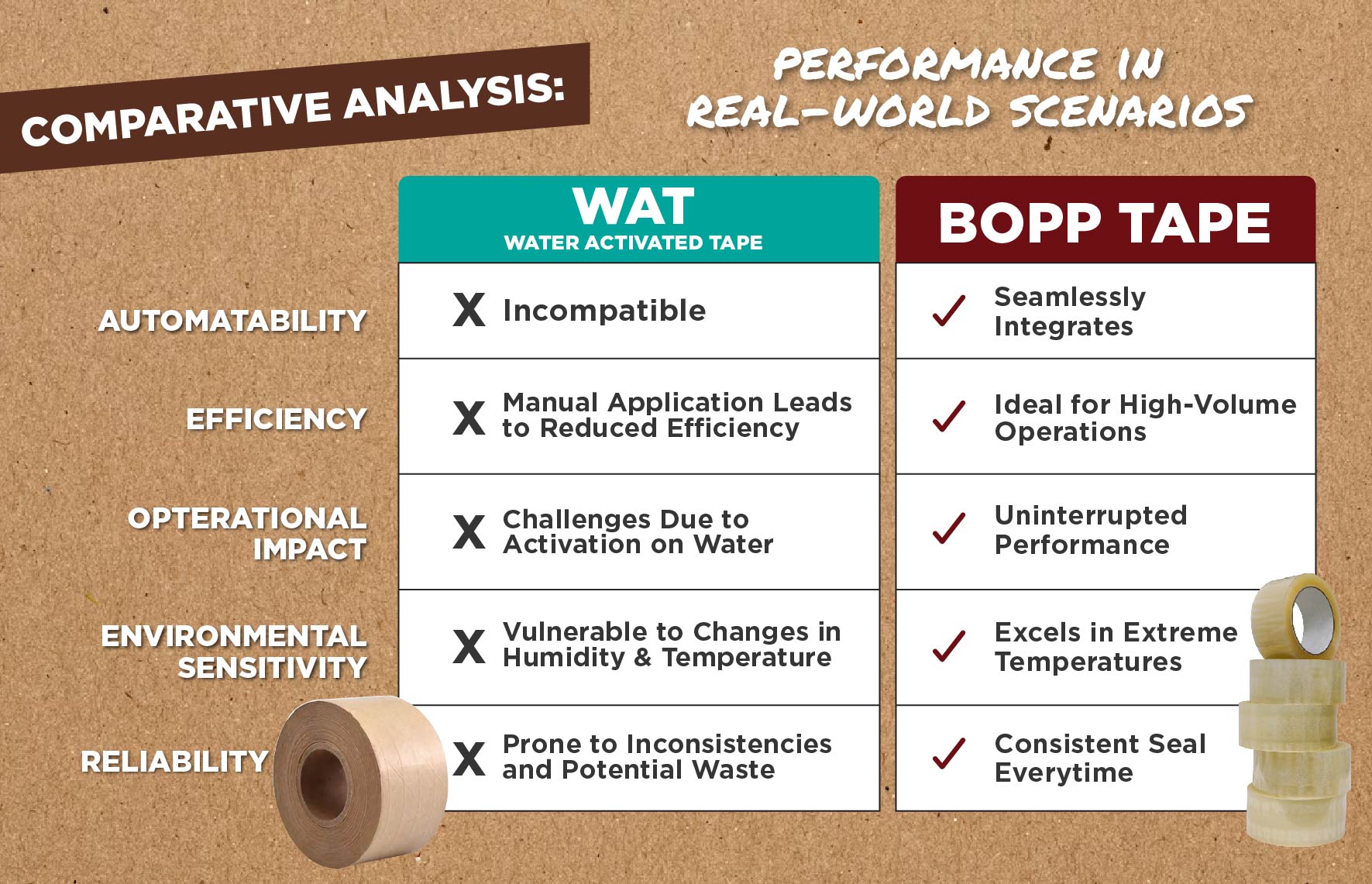
Navigating the choice between Water Activated Tape (WAT) and BOPP tape is pivotal for packaging operations that prioritize both environmental impact and efficiency.
While WAT may have its place in certain scenarios, the overall advantages of BOPP tape in terms of performance, sustainability, and cost-effectiveness make it a superior choice for businesses seeking to optimize their packaging processes.
BestPack’s assortment of BOPP tapes, including our BP, BG, and HT lines, showcases our dedication to delivering sustainable and high-performing sealing solutions.
BP Acrylic Tape
The BP line is our standard bearer, a water-based acrylic tape that excels in extreme temperatures. Known for its excellent clarity and UV radiation protection, the BP tape prevents yellowing and is ideal as a freezer grade tape for cold temperature applications, ensuring longevity and reliability even under rigorous conditions.
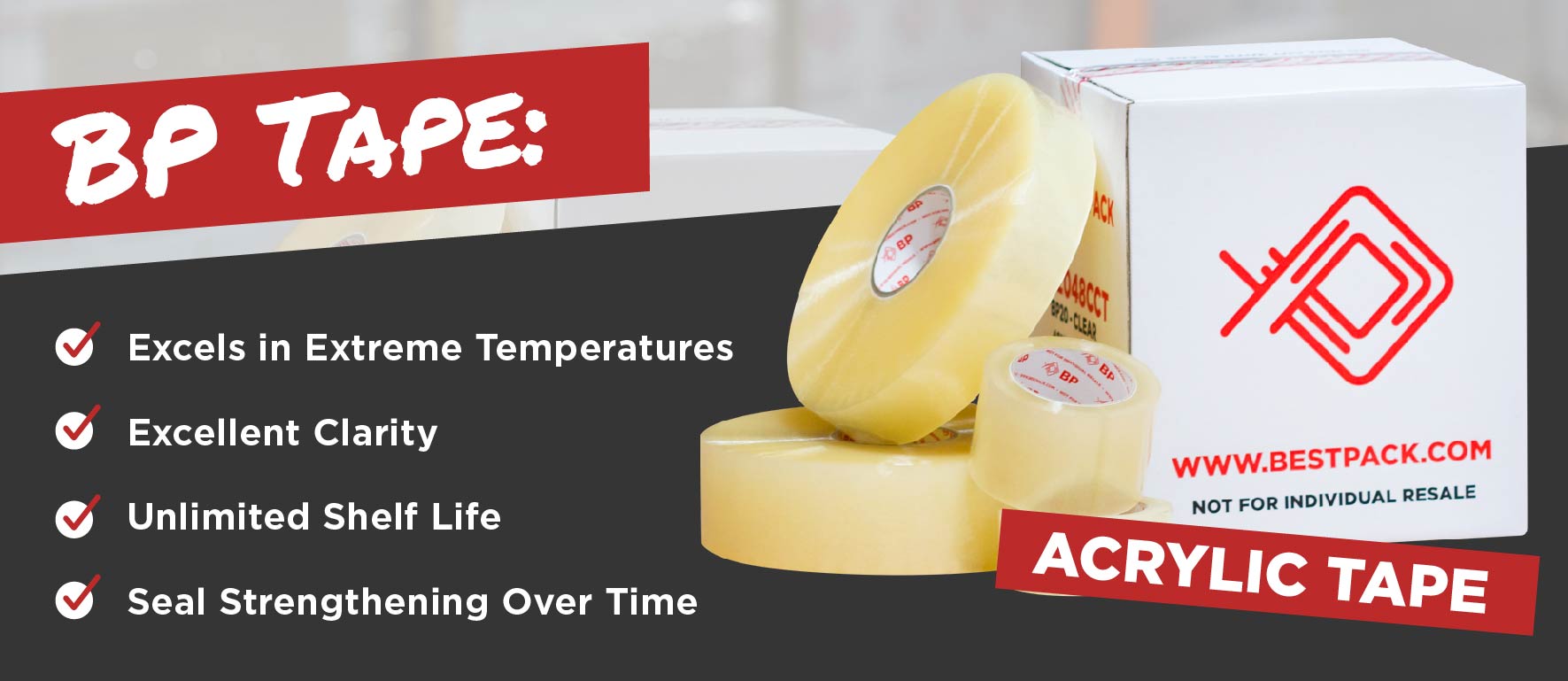
BG Tape
Turning to our BG line, it’s an acrylic tape crafted to adhere with an aggressive high tack to recycled corrugate, a challenge for most tapes. It’s the go-to for boxes that have seen better days but still need a strong seal. The BG tape’s exceptional stickiness is matched with the enduring quality of acrylic, providing a dependable seal in both hot and cold environments.
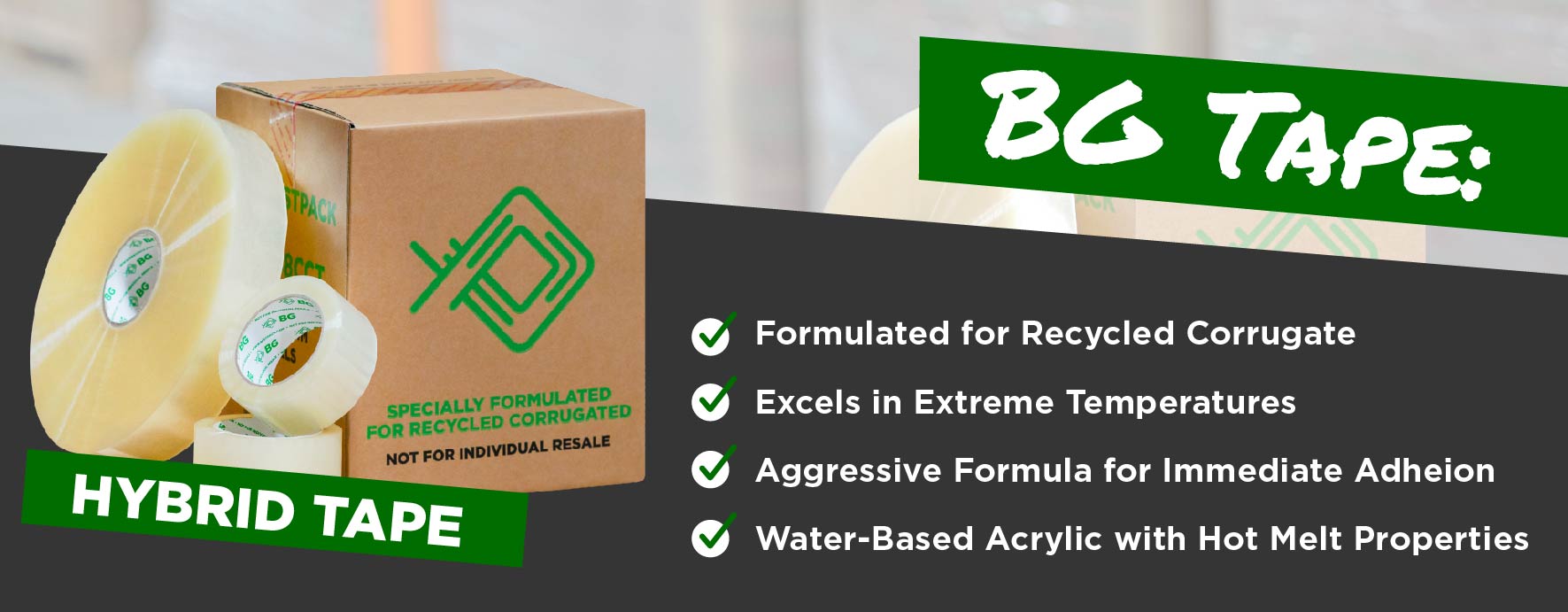
Hot Melt Tape: HT Tape
Our HT line breaks the mold as a hot melt tape, diverging from the acrylic formula to offer instant adhesion. It’s the solution for businesses seeking immediate stickiness without the wait, though it’s best used in stable temperature settings since it doesn’t share the wide temperature range tolerance of its acrylic counterparts.
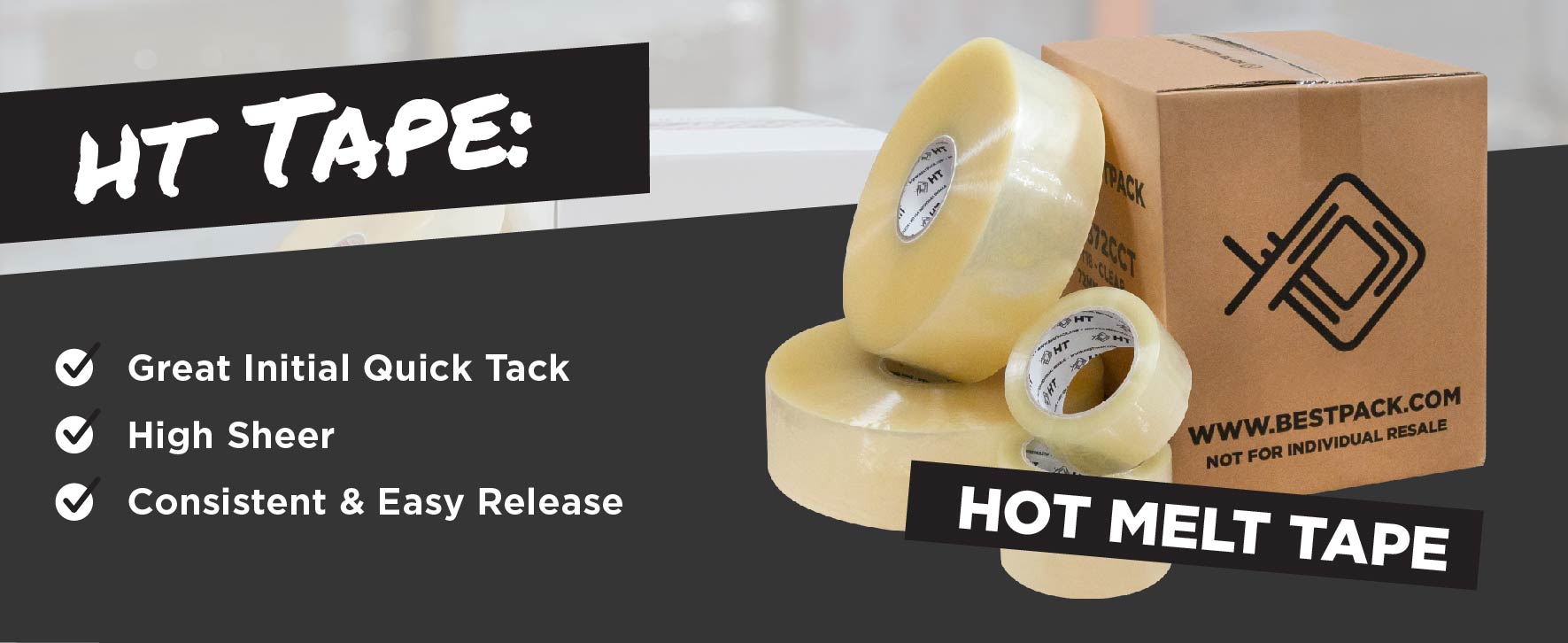
At BestPack, we understand the critical role packaging plays in both business efficiency and environmental responsibility. Our range of BOPP tapes, including the BP, BG, and HT lines, is designed to meet diverse packaging needs while upholding our commitment to sustainability.
Our expertise extends beyond just providing tape; we offer comprehensive packaging and automation solutions.
Whether you’re in the food industry, pharmaceuticals, or any other sector, our team is equipped to provide tailored solutions that enhance your packaging process, both in terms of efficiency and environmental impact.
For more information and expert advice on selecting the right packaging solutions for your business, reach out to our dedicated team. We are here to help you make informed decisions that benefit both your operations and the planet.